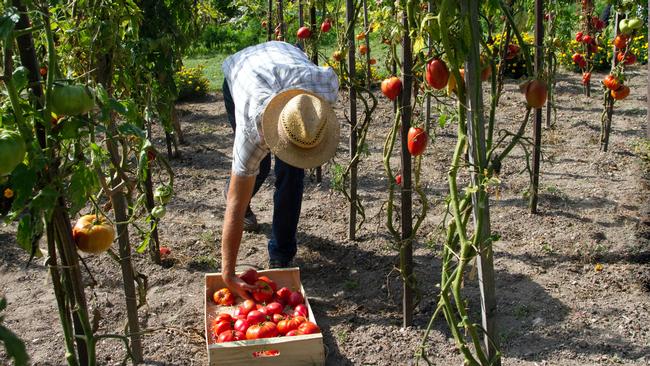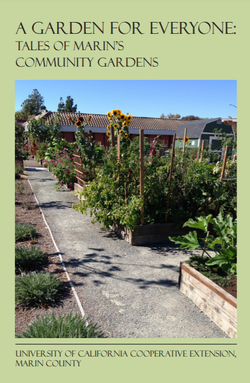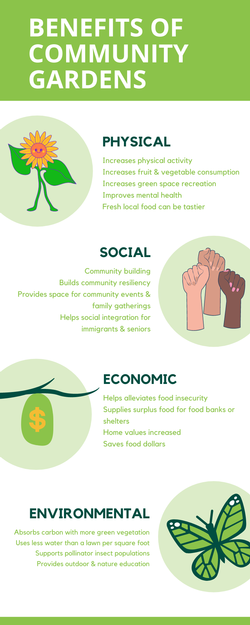How to Start a Community Garden

Important Factors to Consider:
Get your community involved
• Ensure you have a community of interested neighborhood volunteers
• Form a committee to establish garden rules, plot assignments, applications, dues (if any), bill payments, conflict resolution
• Find support from local nonprofits such as conservation corps, municipal parks, and recreation departments that can provide leadership and resources such as insurance, training, and technical help
Find land for the garden
• Vacant lot that gets at least 6-8 hours of sun a day
• Relatively flat
• Conveniently located, close to volunteer community
• Site without paving is best, though container gardening on asphalt or concrete is possible (but more expensive)
Land use permissions & legalities
• Ensure zoning ordinances, permission for land use, and address legal issues
• Contact landowner and obtain lease agreement
• Obtain liability insurance (very important) as well as liability waivers
• Consider local and municipal ordinances
Consider irrigation and water supply
• Existing access to water is crucial
Do you have the requisite budget and infrastructure?
• A community garden with basic elements may cost several thousand dollars to set up.
• Tap into neighborhood resources, volunteers with skills in carpentry, irrigation, design, etc.
• Consider using re-purposed and recycled materials
• Set up a bank account to manage funds, determine garden dues
• Consult city councilpersons for assistance and solicitation of community donations
Planning the Garden:
Setup
• Involve community members in planning, design, and setup
• Individual plots are essential to long-term community involvement: Assign at least 15 to individual community members in sunniest parts of the garden.
Site Analysis
• Find out the climate conditions, and seasonal weather patterns for your site
• Consider trees, existing plants on the site
• Determine existing conditions that may require clearing, removal of rocks, weeds and other vegetation
Soil
• Test soil for fertility, pH, and presence of heavy metals and other contaminants
• Amend soil with aged compost or manure to improve fertility and increase organic matter content
Plot Types
• Raised bed plots should be no more than 4 feet wide and 8 to 12 feet long.
• Any lumber used in raised beds should be free of dyes, stains, paint, or other applications.
• In-ground plots can be from 10x10 feet, up to 20x20 feet
• Pathways between beds and plots should be at least 3 to 4 feet wide
Irrigation
• Simple irrigation system with one hose bib or faucet for every four plots
• Hand watering with a hose is most practical and affordable.
• Drip and soaker-hose irrigation is especially good for fruit trees and ornamentals.
Physical features
• Install an 8-foot fence to keep deer and other animals out
• A tool shed for tool and equipment storage
• Bench or picnic table for seating
• Consider youth area for learning or play
• Shared composting area
• Consider other enhancements such as drinking water fountain, meeting areas, perimeter landscaping, small fruit tree orchard, community bulletin board
Other considerations to plan for
• Volunteer fatigue and dropout
• Dealing with trash and excess waste
• Effective and frequent communal communication
• Security from occasional vandalism and illicit behavior
SHARING YOUR GARDEN'S BOUNTY with the greater community
COMMUNITY GARDEN RESOURCES:
American Community Garden Association
Ground Rules: Legal toolkit for community gardens
Sample agreement: Using property for food gardening
Tips on working with local government
Dig, Eat & Be Healthy: Growing food on public property
Need consulting help for your community garden?
Visit Our Community Garden Consultants page
OR CONTACT US
SchoolandCommGardens@marinmg.org


